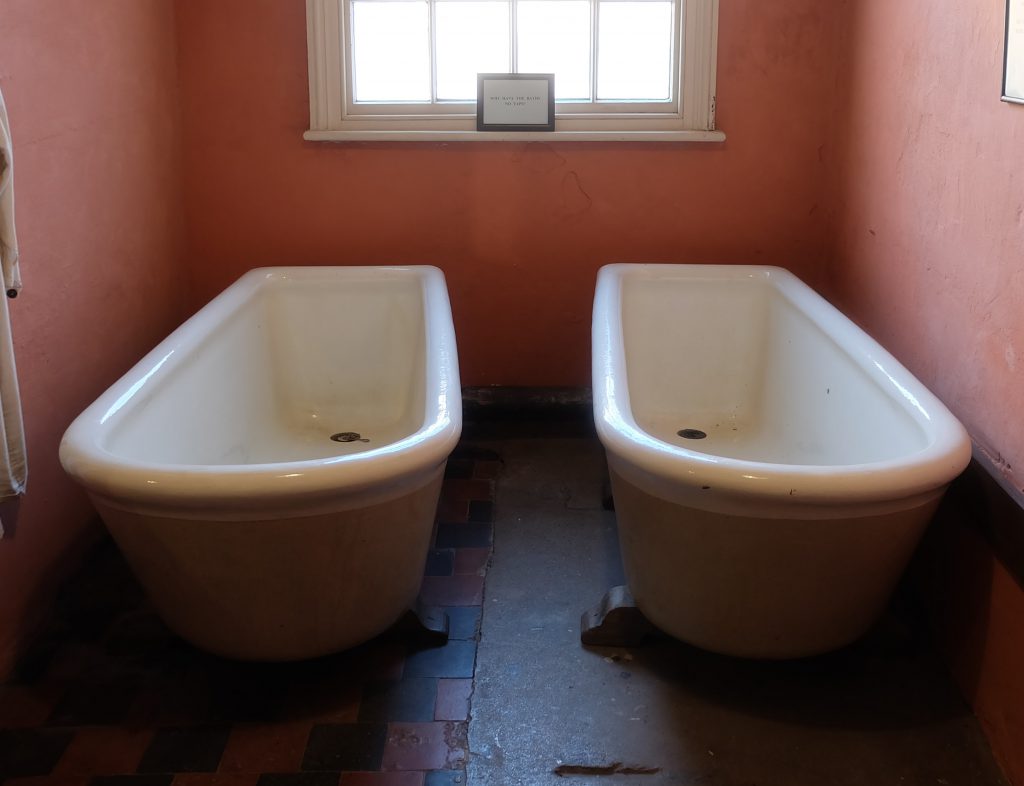November’s Object of the Month is a bath, used in Ripon Union Workhouse. It was found in the isolation hospital at the workhouse but is now on display in the Vagrants’ Wing of the museum, to illustrate the cleaning and disinfection process used on vagrants when they entered the workhouse.
Vagrants in the Workhouse
In 1834, a new Poor Law was introduced, which required each parish to provide a workhouse for those unable to work. The new Poor Law, however, made no provision for vagrants, or the ‘casual poor’. In fact, many Boards of Guardians, who were responsible for the administration of the workhouses, viewed vagrants as a problem for the police. In addition, the union was only legally required to provide relief for those who lived in the parish, rather than vagrants who moved from place to place.
However, following reports of vagrants dying from exposure after being turned away from workhouses, the authorities had a change of heart and in 1837, a new regulation was introduced that required food and a night’s shelter to be provided for any destitute person, in urgent or severe cases. In many workhouses, vagrants were originally housed in existing isolation wards, before purpose-built blocks were introduced. However, at Ripon Union Workhouse, which was built later than many other workhouses, the vagrants’ block was built as part of the original complex in 1852. In 1866, it was moved to the east side of the complex and in 1877, it was extended to include cells to keep the vagrants apart. A plan of the workhouse from 1930 shows a female vagrants’ block was added to the west side of the complex.
Entry to the casual ward
Vagrants’ blocks were often known as casual wards, or more colloquially as ‘spikes’.
Any vagrant wishing to enter the casual ward of a workhouse was expected to queue up outside until about five or six o’clock, when they would be admitted. Many vagrants were turned away because of a lack of beds so it was wise to start queueing early. At Ripon Union Workhouse, the porter was responsible for admitting the vagrants to the casual ward, where they were overseen by the Tramp Major, a former vagrant appointed by the Guardians to supervise the ward.
On entering the casual ward, the vagrant would have his clothes removed to be fumigated and would then be expected to bathe in one of the two baths in the bathroom (the other was used for washing clothes). There was a fear that vagrants carried disease and, in a time of cholera epidemics, fumigation and cleanliness were considered vital in preventing the spread of disease through the workhouse. Having said that, the baths did not have taps and the vagrants would bathe in water that had most likely been used by several people before them. The vagrant would be given a blanket and a workhouse nightshirt, whilst their own clothes were fumigated, dried and stored.
You can see these baths on display in the vagrants’ wing of the Workhouse Museum, along with a vagrants’ nightshirt and a replica fumigation cabinet.
 Workhouse Museum
Workhouse Museum